Assuring Black Is Beautiful and Visible in the Fashion Industry
Bethann Hardison & Frédéric Tcheng on bringing black beauty out of the shadows and onto the runways.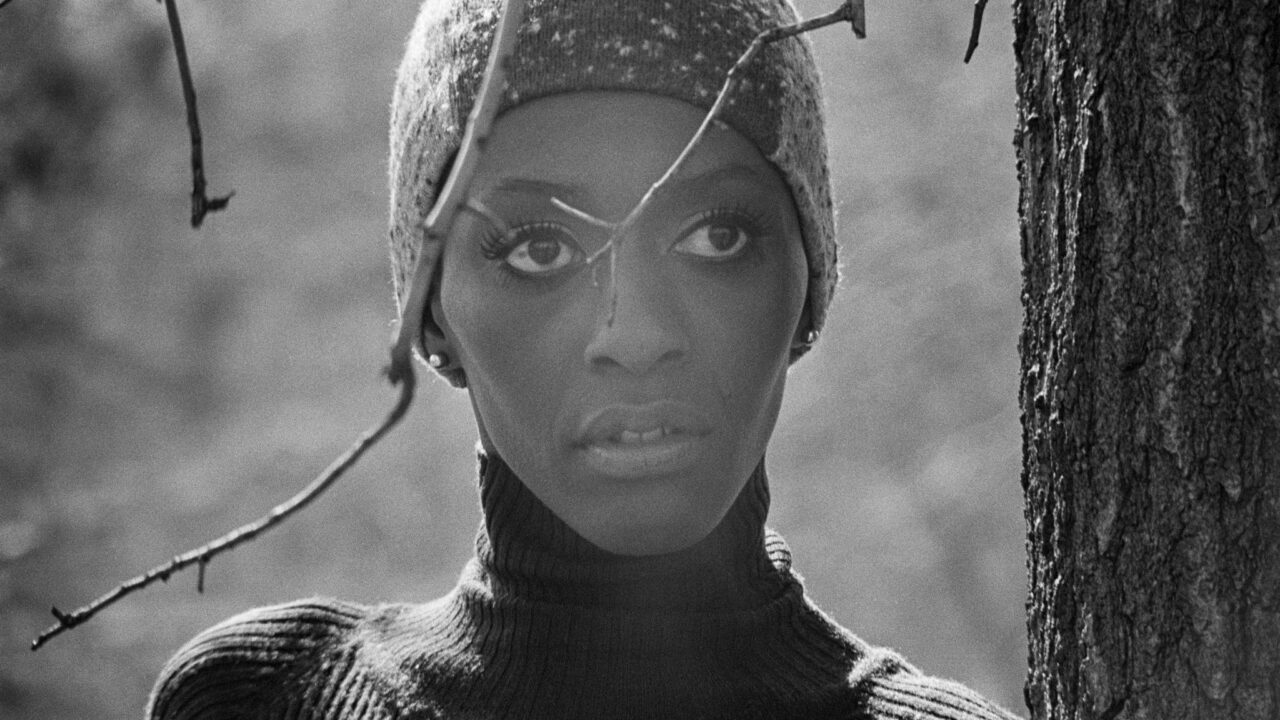 A still from "Invisible Beauty." (Photo: Magnolia Pictures)
A still from "Invisible Beauty." (Photo: Magnolia Pictures)
As the Civil Rights movement desegregated apartheid America, the Black Power and “Black is Beautiful” movements went on to break new ground in the fashion industry, that arbiter of taste, style and pulchritude. In 1967 Brooklyn-born Bethann Hardison took to the catwalk, challenging the haughty haute couture world’s Eurocentric aesthetic that had dominated perceptions of beauty, by becoming the first dark-skinned African-American model with natural hair to grace runways from Manhattan to Europe. In doing so, Hardison opened the door for those who had been left out by Caucasian tastemakers and did not see themselves reflected at fashion shows and in advertising imagery.
After her career as a model ended, Hardison pursued her goal to open up the fashion world to nonwhites and pursue pay parity by establishing Bethann Management, a modeling agency that represented up to 75 multi-culture models and pushed for diversity and inclusivity on the runway, in print and on TV. Her models included Veronica Webb, a Vogue and Elle cover girl who became the first African-American signed to a major cosmetics contract, with Revlon. Hardison also represented Tyson Beckford, arguably the best-known male model ever, who signed an exclusive contract with Ralph Lauren, as well as her son, actor Kadeem Hardison, co-star of the 1990s sitcom “A Different World.” Other talents on Bethann Management’s roster included: Bonnie Berman, Josie Borain, Roshumba, Kimora Lee Simmons, singer Brandy, T-Boz from TLC, and Treach from the hip-hop trio Naughty by Nature. Comme des Garçons, Karl Lagerfeld, Yves Saint Laurent, Chanel, Calvin Klein, Kenzo, Issey Miyake, Vogue Italia, Elle, and Marie Claire were among her agency’s clientele.
In 1988, Hardison and Iman co-founded the Black Girls Coalition, which, according to the website https://www.bethannhardison.com/, is “a watchdog group providing advocacy and support to African-American models and raising awareness.” By 2007, Hardison continued her activism with influential town hall meetings, press conferences and targeted letter-writing campaigns. One of her targets was the pay disparity between white and nonwhite models. In the film, a Black model laments being paid $700 for a photo shoot that a Caucasian model of comparable status, she claimed, would receive $3,500 for. Hardison also denounced the alleged practice of casting directors and stylists who informed agencies “not to send Black and ethnic models” for gigs.
The documentary focuses on Hardison and her ongoing crusade against exclusion and racism in the rarefied realm of fashion.
She is continuing to push for equity in the fashion industry with the release of the almost two-hour documentary “Invisible Beauty,” which Hardison co-directed with Frédéric Tcheng. A French-born filmmaker, Tcheng has co-made documentaries about Harper’s Bazaar editor Diana Vreeland and the designers Valentino, Christian Dior and Halston.” Invisible Beauty” is produced by Emmy Award winner Lisa Cortés, who helmed the excellent 2023 nonfiction biopic “Little Richard: I Am Everything,” and executive produced by supermodel Naomi Campbell.
The documentary focuses on Hardison and her ongoing crusade against exclusion and racism in the rarefied realm of fashion. The film also depicts how world historical events, such as the fall of the Berlin Wall and the Black Lives Matter movement, impacted models, designers and who we see and don’t see on the runway, in print and on television ads. Hardison and Tcheng were interviewed in New York via Zoom. “Invisible Beauty,” which premiered earlier this year at the Sundance Film Festival, will be theatrically released on Sept. 15.
Truthdig: Is your film’s title a reference to Ralph Ellison’s [1952] novel “Invisible Man”?
Bethann Hardison: [Laughs.] You’re the only one who ever said that, and yes, you’re right. Way back in the day there were a lot of things you had to read and a lot of art you had to see. And Ralph Ellison’s book was “Invisible Man.” When I decided the title, I think that’s what it was.
Truthdig: In the 1960s, when you started modeling, what was the situation for Blacks in the fashion industry, in terms of models and designers?
BH: As far as the models of color, yes, in that time, there were always those who serviced the garment industry. It’s just that when I came along, I was that one that looked a little different than what they normally had. More girls came along in the ’70s, for sure, that’s how we were able to do Versailles.
Truthdig: How much of your modeling was done in Europe and how much of it was in America?
BH: During a certain time, I did a lot of modeling for young designers coming up like [French designer] Claude Montana and [Japanese designer] Issey Miyake. There were many people I worked for. But I did it seasonally, in and out. I was only a runway model. So, I was never a print girl… In America, I think it was much more, a little bit more, because it was more home-based. But I worked with maybe more well-known American designers.
Truthdig: What was “The Battle of Versailles” in 1973 and what was its significance?
BH: It was the five designers – Eleanor Lambert came up with this idea with Françoise de la Renta, former wife of Oscar, to do something to benefit the Marie Antoinette theatre [Théâtre Gabriel] and the Hall of Versailles. They thought it would be a great society thing. Ms. Lambert really thought they should represent these particular [American] designers [Oscar de la Renta, Bill Blass, Anne Klein, Halston and Stephen Burrows], that she could bring them and put them onto the international stage so they could be recognized. That was the original concept.
But once it got into the news, the French newspapers started saying, “Oh, why are these American designers coming here? They can never really do anything. They’re just sportswear people. How can they compare themselves to the French, the real true couture.”
Then they started saying it was going to be a “battle,” see, and they changed the intent. The intent was to just go over and do a benefit show and then it became a battle. [The French camp of designers consisted of Yves Saint Laurent, Hubert de Givenchy, Pierre Cardin, Emanuel Ungaro and Christian Dior’s Marc Bohan.]
We had to still go because we were already committed… But at the end of the day, we took to the stage and we wound up being “Purlie Victorious.”
Frédéric Tcheng: Bethann had an incredible walk that brought down the house. That’s the story we tell in the film. The models of color were many in the American side, and not many at all in the French side. That made a lot of the difference. They really were the hot things in New York, and they knew how to walk.
BH: And the music back then. We always had disco music, like DJ music, which the French never had. So, we really just stood out so much. We had no sets… We had a very simple presentation, as opposed to the French, that had everything, you could imagine.
Truthdig: What were the repercussions back home in the USA over the Battle of Versailles?
BH: It was so great for the girls and everybody. They were so celebrated…
FT: If you look at history in the long lens, for people who weren’t there, Robin Givhan, who’s in our film, she wrote a whole book about it. She highlights it as this watershed moment for American fashion being on a world stage, like Bethann said earlier. And also for Black models to really break out internationally, not just in New York. That’s the story we tell in the documentary.
Truthdig: Frédéric, how did you get involved in co-directing this project with Bethann?
FT: We connected in 2014 for a short film that we made together. It was just three minutes, introducing Bethann for an awards show, the CFDA [Council of Fashion Designers of America] Awards where Bethann was being honored [with the Founder’s Award in Honor of Eleanor Lambert]. I got a chance to know Bethann’s story back then. Over the years, we kept in touch and Bethann had already made a documentary, called “Invisible Beauty” – that was more about the industry, not about her. It was dormant and we’d talk about the possibility of doing a film about her, specifically, but she didn’t think that she had a story to support a feature[-length] film, if you can believe it. I knew there was an incredible story and personality and so finally I was ready, after doing other films, to do it. I asked Bethann to collaborate. I think the only way that I could do it was if she did it, too.
Truthdig: What was the importance of the Bethann Management Agency?
BH: The industry at that time – there was a modeling agency that I worked at called Click that was small and unique in its style. I came off that. I basically started a modeling agency that was more diverse… I had Black, Latin and Asian kids in it. It was unique for what it was because it was smaller and I really didn’t want to think that I had a model agency. I really educated the kids about business, making them be aware of the fact that you don’t work for me, and I don’t work for you, we were partners.
I wanted the industry also to recognize something that could be different and the energy. There were a lot of young photographers coming up at that time and I offered exactly what they wanted, what they needed at the time. Because I was coming along with a different type of model. Kids coming from Europe and all. So that was what was great about the agency at the time, and I’m very happy that I was able to do it, even though I didn’t want to do it, I did it well. Then I couldn’t wait to get out of it. [Laughs.]
Truthdig: You shut down your agency in 1996 and then got called back to push for more diversity in the industry. Tell us about the 2007 town hall and the role of casting directors?
BH: It was held at the Bryant Park Hotel, right across the street from Bryant Park, in New York City. Casting directors had become something the designers had started to hire, instead of using their own staff to select the models. That changed the game. The stylists or the casting director would go and look for models, for more models, different models than were in the U.S. fashion scene. So, they were constantly replenishing and putting more into the industry, too many. And then Eastern Europe had opened up, so then scouts were going in there. The next thing you know they’re bringing models into America and the Eastern European girls’ body alignment is so different from the American girls, whether they be Black or white. That became the new image.
Truthdig: What are the roles of Iman and Naomi Campbell in your documentary?
BH: Naomi and Iman were interviewed for “Invisible Beauty.” They actually helped to tell my story because naturally, anytime I was going to do something – mostly, first, Naomi was like my foot soldier, because she’d let me know what was going on, whether I was in Mexico or New York. She traveled the world, she could see what was happening as a model. She would feed me information I could see.
Iman, although she wasn’t in the modeling industry anymore, wasn’t in the fashion industry anymore, she had a beauty company and was doing other things, was married, when I’d do anything in regards to the consciousness raising, she wanted to be there. So she was always there. So, between the two of them, when you get ready to do press or do bigger things, the world always likes to look. So, you have to use more boldfaced images. They were naturally, authentically, the people who you really had to bring forth, because they were believers, supporters and really doers.
Truthdig: What is the situation today for Black models and designers in the fashion industry?
BH: Yes, it’s much improved. That started to change in 2014. And actually, it really became something that you could visibly see. And now, you see it really frequently, editorial, on runway, advertising, commercial advertising, print advertising. The models of color are there. I think it’s very important. I don’t think it’s going to go away – I hope! We’ll see. My feet are always on the clutch.
The designers exist, yes, they do, too. They got a better shot after the Black Lives Matter movement happened right after Mr. Floyd lost his life. Then, that became something so significant. That people started to want to – “Okay, where are the Black designers?” I had already started a group of designers that I was guiding two years before that problem that happened in our nation. In 2018, I had Black designer shops. So, these designers are out there now. They’re emerging brands, but the industry is supporting them and giving them more opportunities and so they do exist much more than ever.
Truthdig: Are you still writing your autobiography?
BH: Yes, I am. I had to stop writing back in October/November, because the film started to take such a precedence that I had to really stay focused on one thing. The publishing company understood that and they felt a little bit calmer because they could see the film and the book – the film would not stop the book. Now, it’s so funny, because we’ve shown the film and it has that storyline in it and people are interested in the book. I hope to finish it by the end of the year.. It’ll probably be out by the end of 2024 or beginning of 2025.
Truthdig: What’s next for you after “Invisible Beauty” is released?
BH: I need to finish the book and be able to make sure that “Invisible Beauty” really is like a legacy film. I’d love very much for the film to be seen by schools, community, impact… People should see it in a movie theater to appreciate the visibility, as well as the sound and music… I want to make sure it has a broad breadth of many people to see it. But also, to be left in an academy, placed into whatever I leave behind, placed in an institution, so that it can always live forever, for everyone… Then I’d like to be able to live four months in Mexico, four months in New York, four months in Morocco.
FT: We’re going to spend a lot of time supporting the film and making sure it reaches as many people as possible in the next few months. And I’ve been taking my time to think about what to do next, because what human being can follow Bethann Hardison? [Laughter.]
Your support matters…Independent journalism is under threat and overshadowed by heavily funded mainstream media.
You can help level the playing field. Become a member.
Your tax-deductible contribution keeps us digging beneath the headlines to give you thought-provoking, investigative reporting and analysis that unearths what's really happening- without compromise.
Give today to support our courageous, independent journalists.


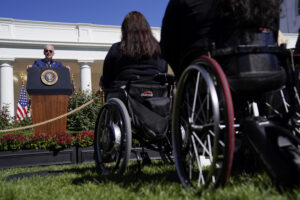
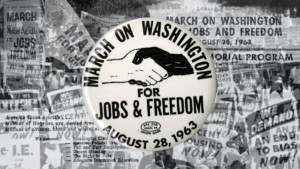
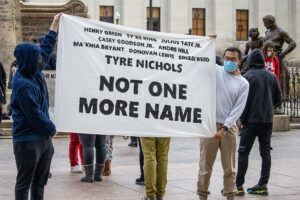
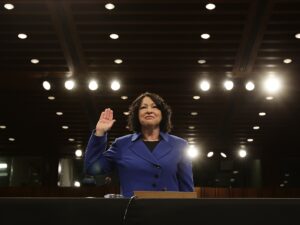
You need to be a supporter to comment.
There are currently no responses to this article.
Be the first to respond.